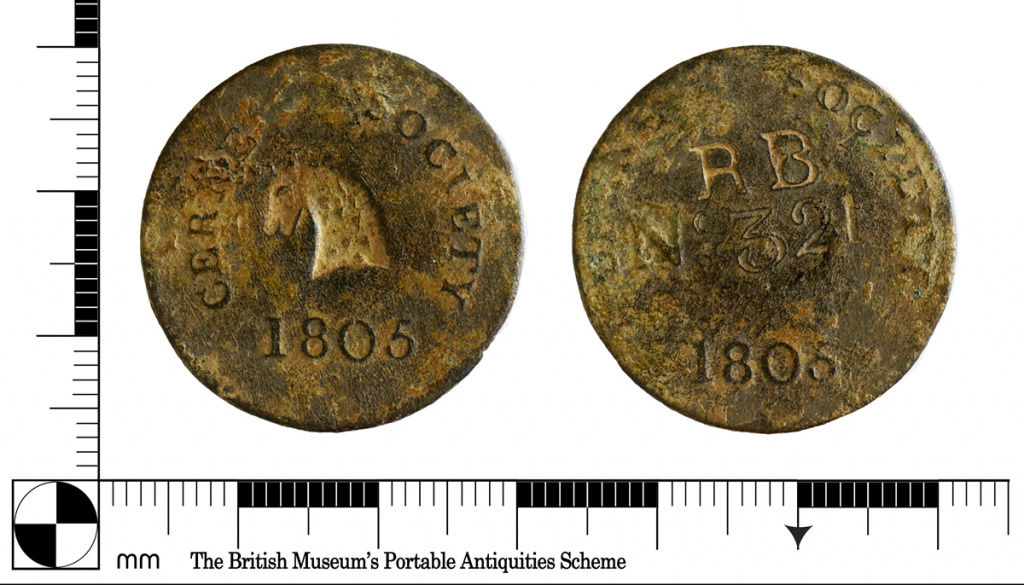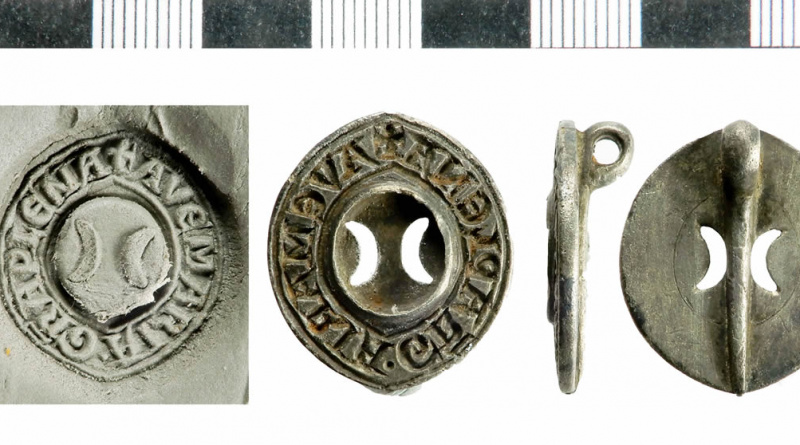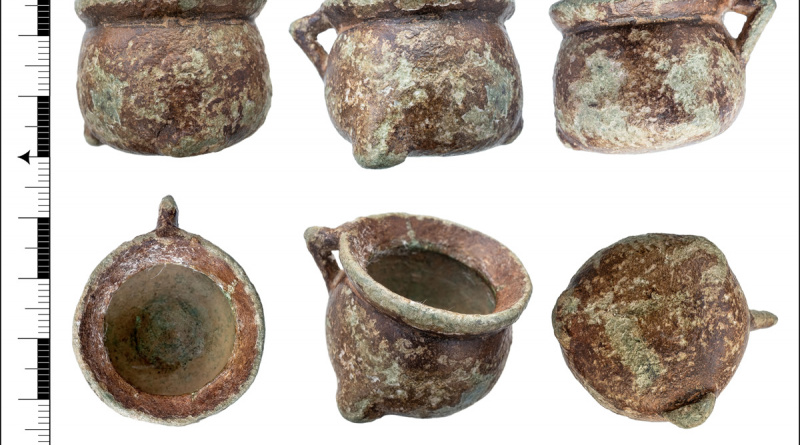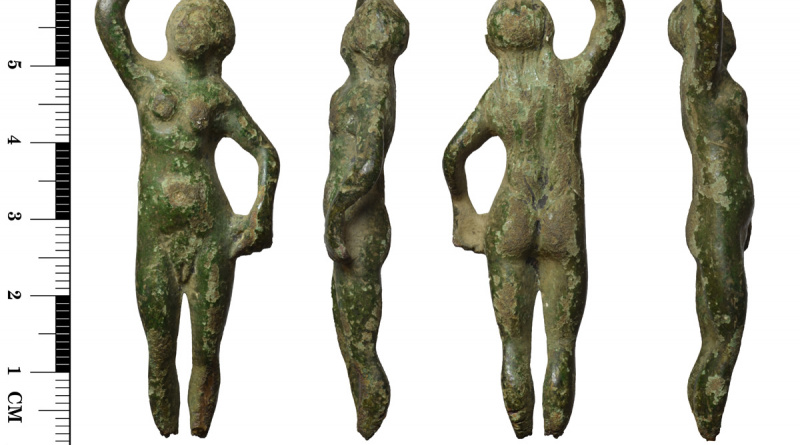PAS Finds: week ended 21 January 2022
PAS Finds: week ended 21 January 2022
Here is my selection of the 427 finds recorded at the PAS in the week ended 21 January 2022.
The exact nature of the featured find is still somewhat of a mystery. If you know anything more about it, please do get in touch.
Featured Find
Cerne Society token
A brass token with legend CERNE SOCIETY 1805 on both sides. In the centre of one side is a horse’s head and on the other is stamped “R B” and the number “1805”. Cerne will be Cerne Abbas in Dorset (famous for its chalk man), a few miles from the find spot.
Similar tokens
No similar tokens appear to have been recorded on the PAS. An internet search revealed a few similar pieces.
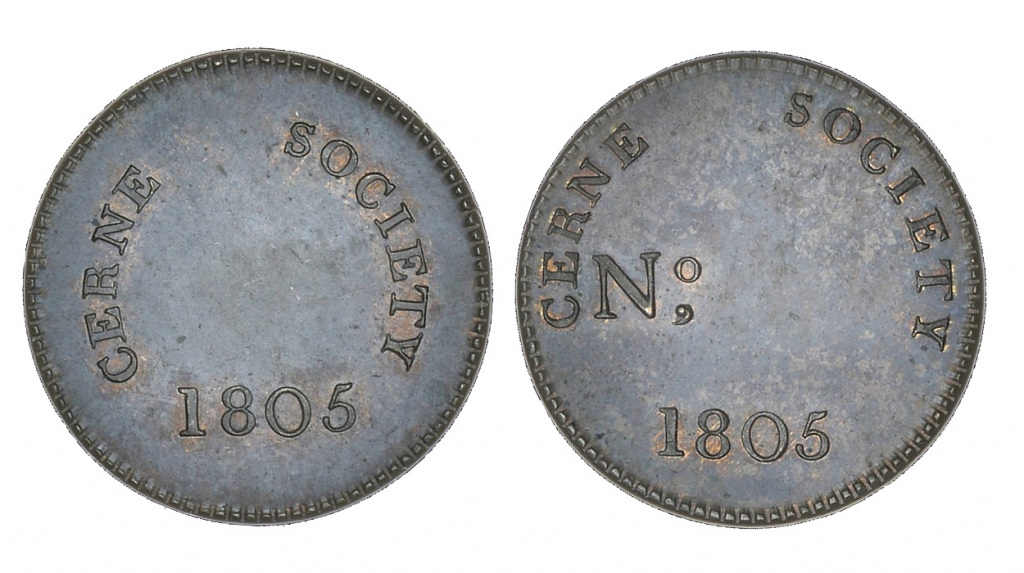
Cerne Society blank token. Photo © DNW
Some were effectively blanks, with just “CERNE SOCIETY 1805” on both sides, with No. on one side, presumably ready for a membership number to be stamped on. The one shown here is from a DNW auction in 2014.
All the other Cerne Society tokens that I have been able to find have a “RB” and horses head stamped on one side and a number of the other side.
Henry Symonds
What was the token for and what do the “RB” and nags head signify?
Henry Symonds was asking the same question over 100 years ago and sent a letter to Notes and Queries for Somerset and Dorset in 1907. By a couple of years later, Henry had found some answers because in a article he wrote for the Dorset Natural History and Archaeological Society in 1909 he says
“This Society was established on 6th June, 1785, at the Nag’s Head Inn, Cerne Abbas, the initials being those of Richard Barnwell. The first President was John Cockeram, and the members were limited to 401. In 1819, Sir John W. Smith and R. A, Cox were acting as treasurers.”
The Sir John W Smith that Henry refers to is probably Sir John Wyldebore Smith. who was a wealthy local land owner and a member of couple of societies, promoting the education of the poor in the principles of the church. A memoir of one of his descendants has him as a “stern magistrate” and his wife as “generous to the poor”.
Nags head and Richard Bramwell
The image of the horse on the token ties in well with Henry saying that the Cerne Society held its meetings at there.
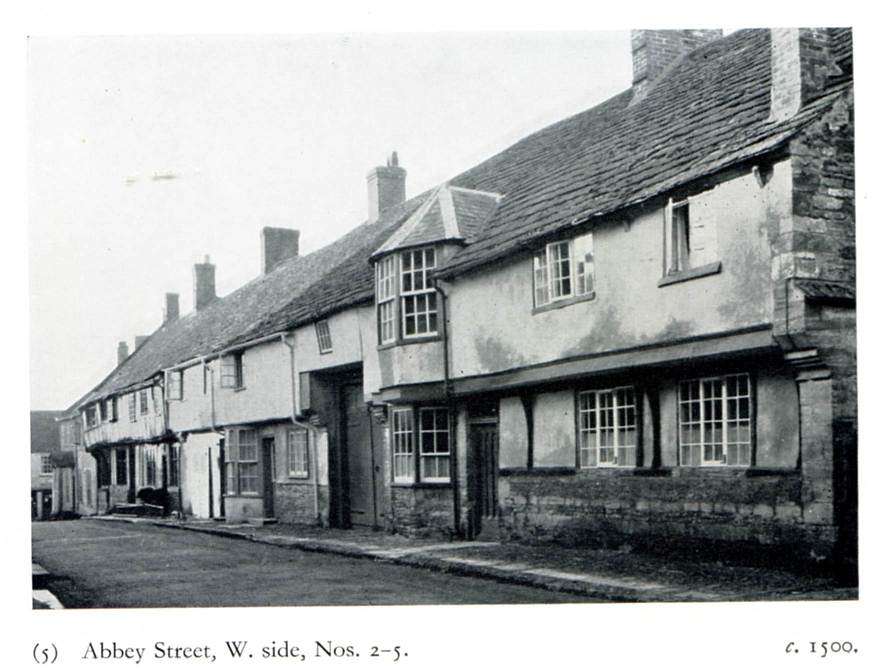
The Nags Head builind photographed in the 1930’s
The Nags Head is now a private residence, although interestingly it is called Bramwells , indicating a strong connection with that family.
The 1851 census gives a Richard Barnwell as being an innkeeper on that road. That fits well with Henry’s report that “RB” were his initials.
However, what remains uncertain is why it has the date 1805, as it was founded in 1785 and our Richard Barnwell was only born about that date (probably a son of a Thomas Barnwell). Also, what was the purpose of the society; it could be the forerunner to the Cerne Friendly Society which was enrolled by parliament in 1831.


